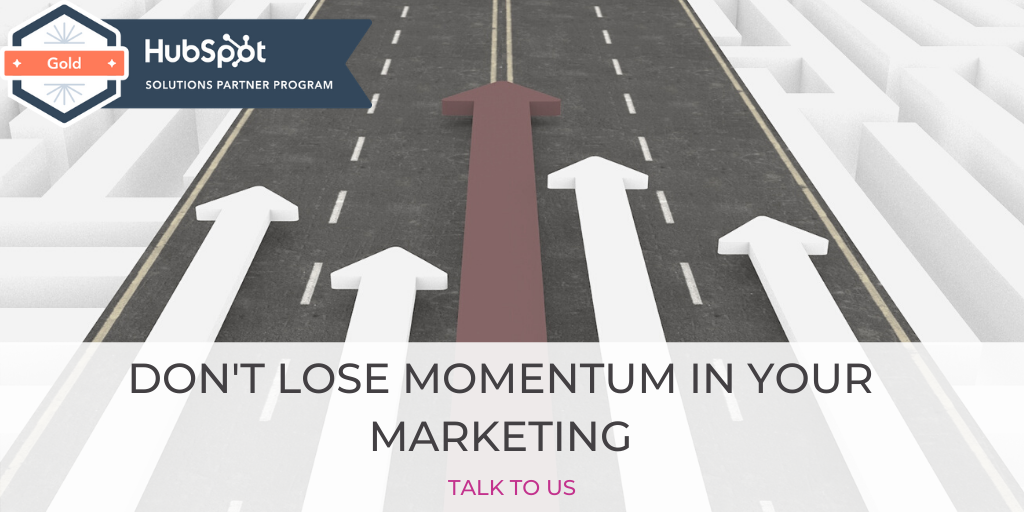The strength of your brand in your market will help to determine your business’ success. Anonymity, on the other hand, makes it very difficult to gain traction. After all, consumers need to know who you are before making a purchase or seeking service.
Brand awareness familiarises your potential customers with the products and services you offer. It establishes your share in the market, boosts sales volumes, and helps maintain customer loyalty.
Large companies have devoted significant resources to increasing their brand presence over time. For example, McDonalds’ red and yellow color pallete and their Golden Arches are recognisable across the globe. The logo can be placed almost anywhere and still be associated with the fast-food chain. This is a result of extensive marketing, which has cost them billions of dollars to achieve.
But small business owners and startups are more constrained with budget and resources. At times, increasing your brand awareness might not be a priority. For most, the overarching goal is to increase revenue. However, increasing your brand awareness leads to more online exposure, which results in more sales.
Effective brand awareness associates your business with having a strong market position. With engaging content that captures your potential customer’s attention, they recognise your unique selling points. It separates you from the other brands in the market. You’re able to cut through the noise and have a distinct brand.
What is brand awareness?
Brand awareness is the extent to which consumers are familiar with the distinctive qualities or image of a particular brand of products and/or services. Consumers recall your business name, products, services, information, and other details about your business, based on your brand.
If your marketing strategy is aligned with increasing brand awareness, consumers are more likely to purchase from you on the basis that they know who you are. When they think of a particular product or service that they need, brand awareness is about them knowing of you as a company that can provide what they’re looking for.
The benefits of increasing brand awareness are improved customer retention, brand advocacy, ease of acquiring new customers, and the ability to introduce new products to your market with ease. Ultimately, these benefits translate to increased sales.
Exposing your brand to your audience keeps you relevant and at the top of their minds. By not prioritising brand awareness for your marketing, you’ll have a more difficult time building a customer base.
Although big companies have limitless resources at their disposal to experiment with their campaigns, it’s not the same for small business. For the latter, you need quick, efficient, and cost-effective campaigns that won’t leave you in the red. Listed below are some campaigns your small business can try out, to increase your brand awareness.
Word of mouth marketing
Testimonials from your customers are a powerful tool to increase your brand awareness. They should be included as a section in your website, posted in your social media accounts, or included as YouTube comments. Reviews on external sites are also hugely important – especially when people are looking for a trusted supplier.
Through positive engagement with your customers, you can influence the nature of their testimonials. It helps increase the credibility of your brand, which can influence others to make the same purchase. Additionally, it provides useful feedback for the you as well, to help you improve on other areas of your business.
This type of campaign can highlight the problems your customer faced before discovering your brand. Then, information about how they solved their problem with your help follows. Through testimonials, your prospects are given an honest and informed opinion of what it is you offer. They receive your product’s unique selling point from an unbiased perspective. Aside from enhancing your brand awareness, this improves your customer loyalty and retention rate.
Having all of this on your own website is one thing, but for brand awareness, you need people to talk about you on their own platforms. Providing incredible customer service makes it more likely that someone will not only leave a happy customer, but that they’ll tell other people about you – boosting your audience to people who might not have previously been aware of you.
Video marketing
Videos engage your audience longer than any other type of content. By adding videos to your website pages, uploading them on your social media accounts, or hosting tutorials and webinars, an increase in your brand awareness should be expected.
To keep your audience engaged, make sure your video content is original and that it stands out amongst the billions of other clips online. But also remember to keep your videos concise with a clear message.
Platforms such as Facebook, Twitter, Instagram, and YouTube are great channels you can promote your content exclusively. You can also integrate it with your email marketing, blog posts, and your landing page. Don’t leave out any channel where you can promote your video.
To really push brand awareness, promoting your social media posts will help you reach a wider audience than you can through your organic channels, and you can target your ads at your target market.
Make sure your video content is branded – use your logo and brand colours consistently – otherwise you might waste time promoting something that doesn’t immediately tie back to your brand.
SEO
To maximise your customers’ awareness of your brand, they need to be exposed to it as frequently as possible. Through repetitive exposure, brands and products gain their share in the market. When you get a foothold in your industry, customers and prospects are more likely to mention your brand, which lends it credibility.
Search engine optimisation (SEO) is one tool that can help put you in that position.
SEO is a huge topic, so we won’t go into all of the ins and outs in this article, but the purpose of mentioning it in a brand awareness topic is simple – if your website doesn’t appear to people when they’re searching, they won’t be aware of you. You need to be appearing for the right keywords and search terms, so that people know about you.
Online advertising
Search engines and social media dominate the online marketing space. Every minute, their reach increases globally, which is why small businesses need to utilise these channels. Paid online advertisements include Googles Ads and social platforms, where you can target high quality leads.
Facebook’s advertising tool, for example, allows you to determine the right audience for your campaigns. Through targeted demographics and customer profiles, you can choose which set of your audience will receive a specific set of messages. In turn, your content can speak directly to your target audience.
Display campaigns through Google Ads are great for brand awareness. They have a lower cost per click than search campaigns, and give you the opportunity to show that consistent brand imagery that helps build a picture of your business.
Public relations/PR
Public relations can introduce your business to a new audience. You’ll need to issue press releases to keep your brand in the limelight. These can be through newspapers, radios, TVs, or magazines. This way, you’re not only limited to the online platforms, and you can build awareness through more traditional methods.
For small businesses, it’s good practice to have a minimum of 3-5 press releases every year, but if you have something newsworthy to share, more is better. If your business is hosting events, you can also invite the media to cover your story.
Digital PR, or sharing your press releases with online platforms, is also a useful tool for building quality links, which contributes to your SEO efforts.
For start up businesses, PR will play a big role - you have plenty of news at the beginning, so there should be a lot to talk about. And you need to build brand awareness fast.
Social media
Social media platforms can do so much more than promote your content.
These platforms offer an array of opportunities to engage with your audience. It’s possible to create pages, share your content, partner with influencers, and even run promotional events with ease. Although getting the message across your potential pool of customers is easy, it’s difficult to cut through the noise with these platforms.
Due to their cheap and inexpensive nature, there’s tough competition to beat. As a small business, you’ll need to come up with innovative and creative brand awareness campaign to stand out.
You could start by establishing a branded hashtag for your business or product, to track user-generated content that amplifies your brand and engage directly with people.
And, as we’ve discussed already, promoting your content to a wider audience is key to gaining traction and brand awareness on social platforms.
Influencer marketing
Influencers are people who have gained a sizeable following in their respective market because of their personality. They provide businesses with honest reviews and their followers trust them and their opinions.
Claims for your product will not be validated unless your customers have used them. For small business, influencers can validate those claims by assuring their followers that it’s true. As trustworthy personalities, their followings will be motivated to try the products and share the information because of their loyalty.
Influencer marketing can be a challenge for a smaller business – often influencers demand large fees for relatively little promotion. However, ignoring the big influencers and focusing on more niche areas is the way to go. Forget about the people with millions of followers, because they’re expensive and the majority of their followers won’t be in your demographic anyway. Look for micro influencers, who have audiences that match your own.
Imagery
As previously mentioned, consistent imagery is a key part of building brand awareness. You want people to be able to recognise an image as belonging to your business. Avoiding stock imagery, or modifying it (where allowable) to include your branding, is key.
Aside from images, you can also create infographics for your content marketing. These provide useful content in a visual way, which add to your overall brand image. Additionally, you can promote these widely, adding further brand awareness.
Researching trending content and using industry reports and data can also help you create valuable content. Your content should be aligned with your overall marketing strategy to promote credibility, industry authority, and brand awareness.
Partnerships
Networking with your community and partnering with businesses in your industry helps create brand awareness with the users of the business you partner with, as well as their wider audiences. Beneficial partnerships with small business in your sector provide a win-win solution for both. For example, a local bakery may partner with an owner of a café. Both provide referral for each other while remaining independent in their growth.
Local connections create effective brand awareness campaigns. By operating in the same market, you likely share a similar set of customers with different needs.
Personal marketing
Lastly, you should always strive to humanise your brand. Connecting with your customers on a personal level is a great way to support your brand awareness. They need to see a face behind your business, product, or service. It offers a unique opportunity for them to directly engage with you and learn about your mission.
It’s much easier for people to remember a person than a faceless business. So, even if you are a business, having a face will increase brand recognition and recall. Having a human tone of voice rather than being too formal, or a unique style, or actual employees as part of your marketing will help with that distinctiveness.
Building brand awareness is crucial for both relatively unknown brands and sizeable companies. Although each differ in terms of tactics due to their varying resources, both must consistently strive to invest in their brand awareness campaigns.


